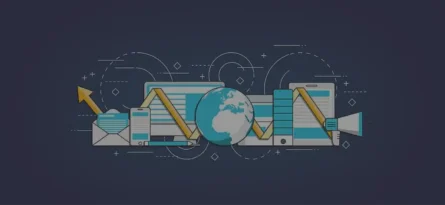ECommerce is one of the most significant drivers of growth for almost any business. As customers grow more comfortable making purchases online, it has become increasingly important to have a presence on the web if you want to remain competitive in your niche. Creating connective e-commerce will put you at a disadvantage against your competitors and limit your ability to grow as a business moving forward. On the other hand, creating an eCommerce site opens up new revenue streams and opportunities that aren’t available through other marketing channels.
The challenge is that building connective e-commerce is a lot different than creating any standard website. If you’re coming from the standpoint of a general web development agency rather than an eCommerce agency, this may seem like something beyond your scope at first glance. Let’s take a look at what it takes to build e-comm as both a developer and a business owner.
What are the key components of an ecommerce website development?
The most important elements of connective e-commerce that you’ll want to consider when building your site include: –
Your customers need to see what they’re buying before they commit to a purchase. Infographics and product descriptions are essential to help them make informed purchasing decisions.
1. Subject To Taxability of each item:
Customers will want to know how much they’re going to be charged in taxes on any items they purchase. You’ll need to know the tax rates for each state where you plan to sell to correctly calculate this for them.
2. Shopping cart functionality:
This is the part of the online smart store where customers put items into their carts and proceed through checkout. They’ll need a way to manage their mini shopping cart and check out with one click, so there needs to be some type of “buy now” button on each product page.
3. Free Shipping and return options:
Customers will want to know how long items will take to ship, how much they’ll be charged for shipping, and what happens if they don’t like or need the products they bought.
4. Users accounts :
Once your customers start buying from you, they’re going to want to be able to log in to see their information, track their orders, and set up payment preferences.
Finding out the right platform
One of the most significant decisions you’ll make when creating a connective ecommerce is picking the right platform. There are a handful of options available at the moment, and which one you choose will have a significant impact on how easy it is to build your site and what features it offers. You should choose the platform that best fits the needs of your business, given your budget and the level of technical expertise you have.
Here are a few things to consider when choosing a platform for your e-Commerce website:
- Cost: One of the first things to consider when choosing a platform for your e-Commerce website is the cost. There are a variety of platforms available, both free and paid. You will need to decide which one is right for your budget.
- Features: Another thing to consider when choosing a platform for your e-Commerce website is the available features. Make sure to choose a platform that offers the features you need for your website.
- Ease of Use: You will also want to consider how easy the platform is to use. You want to be able to easily add and manage products on your online store website for home shopping. It is important to choose a platform that is easy to navigate and user-friendly.
Ecommerce platforms fall into a few categories:
- Software as a service (SaaS) – These platforms are often the easiest to use and have the most extensive feature sets. They’re hosted in the cloud, which means you don’t need to worry about server maintenance, security, or scalability. The downside is that you don’t have as much control over the code or flexibility with how you want to build the site.
- Software downloaded to your computer – This option is somewhere in between b2b SaaS and building a custom solution from scratch. You’ll have more control over the code and can customize the site to your specific needs, but you’ll still have to host the site online and deal with maintenance and security issues.
- Building a custom solution from scratch – This is an option for more experienced developers, but it isn’t recommended for beginners. The issue with building an e-comm site from scratch is that you may not have time to create the custom functionality you need. If this is your chosen route, you’ll need to find a way to speed up development and limit the amount of custom code you write.
Exploring and coaching your development team
If you’re serious about making your e-commerce business successful, you need to put together a strong development team. This team development will be responsible for building and maintaining your e – commerce website, ensuring that it runs smoothly, and providing a great user experience for your customers. Finding the right developers can be a challenge, but there are a few places you can look:
1. Online job boards
Several online job boards specialize in tech jobs, like Dice or Stack Overflow Jobs. You can post a job listing here and attract developers who are actively looking for work. Young tech talents are so useful, so hiring young people will be beneficial, so post online jobs for students as well as online jobs for teens.
2. Social media
In era of Sites like Twitter and LinkedIn are great places to find developers who might be interested in working on your project. Try searching for relevant hashtags or groups, and reach out to developers who seem like a good fit for the social media marketing world.
3. Agency recruitment can be helpful
If you’re willing to invest in professional help, some agencies focus on finding tech talent. They can handle the recruitment process and help you find the best developers for your needs.
Once you’ve found some potential candidates, the next step is to evaluate their skills and experience. The best way to do this is to give them a test project to work on, so you can see how they perform under pressure. When you’ve found true talent and then you build true leadership team development, investing in their training and development is important. The better they understand your business
Communicating with your target audience
If you’ve ever shopped online before, you know there is a significant amount of communication that takes place between you and the seller on the other side of the transaction. You review items, add them to your cart, check out, and leave reviews on items you’ve purchased.
If you’re building an eCommerce site, you need to think about how you’re going to facilitate this communication. You may want to build a third-party integration or use a tool like an Intercom to integrate messages to your customers.
You can use this to send information to your customers, such as order tracking and shipping notifications, as well as collect feedback from them. This will make your customers feel more like they’re talking to a real person, and it will give you a lot more data about what your customers want and need.
When starting an ecommerce business, it’s important to communicate with your focused audience in a way that resonates with them. After all, you want to build relationships with your customers and encourage them to buy from you again and again.
One of the best ways to communicate with your target users is through email marketing. This allows you to send targeted messages straight to their inboxes, and you can track how many people open and click through your emails.
Another great way to communicate with your target visitors is through social media. This is a great platform for building relationships and engaging with your customers. You can post updates about your products, share helpful tips, and answer any questions that your customers may have.
How to find the best choice of products to sell?
When you are first starting an e-commerce business, it can be difficult to know which product to sell. There are a few things you can do to help you find the best product to sell for your business categories.
1. Do your research: This is important both for finding a good product to sell and for understanding your competition. Look at what other businesses in your industry are selling and see what is popular with customers.
2. Consider your audience: Who are you selling to? What do they want or need? Knowing your focused market will help you narrow down your product options.
3. Consider your budget: How much money do you have to invest in inventory? Make sure you choose a product you can keep in stock.
4. Test the market: Once you have a few products in mind, try selling them on a small scale before committing to a large inventory. This will help you gauge customer interest and ensure that there is a demand for the product.
5. Get feedback: Ask customers what they think of your product selection. Doing little effort gives you good feedback. What do they like or dislike? What are they looking forward to seeing more of? Use this feedback to help you make decisions about which products to sell on your e-comm website.
Key Takeaways: Doing little than nothing and getting the best results.
Building connective e-commerce is challenging, but it can also be incredibly rewarding. Once your site is up and running, you will have a direct line to your customers. You’ll be able to understand what they want and need, and you’ll have the ability to provide that for them. You’ll also be able to make more sales, which will help your business grow.
That being said, it is important to choose the right platform and developers to make sure your site is built properly.
Also, if you want to know about consumer aspects and engagements, feel free to read more about Connective Ecommerce: The One Technology That The Every Company Must Have.
You also need to ensure that you have the right products to sell to best serve your customers. Ecomm. is a significant undertaking, but it can also be advantageous. These are challenges that are worth overcoming so if you want to build a successful eCommerce business you can get help from us by getting in touch!








